AO Edited
'The Naked Truth'
In the Compton Hill Reservoir Park sits a statue whose lack of clothing caused a scandal for the group that commissioned it.
German-Americans have a long-established presence in St. Louis, Missouri, so after the deaths of local newspaper industry heavyweights Dr. Emil Preetorius, Carl Schurz, and Carl Daenzer, the community sought a way to commemorate them. The Preetorious-Schurz-Daenzer Memorial Association was formed, and launched a design competition. Adolphus Busch, of the Anheuser-Busch brewing company, served as the honorary president as well as the main donor.
Proposals rolled in, and a 26-member jury reviewed the submissions and selected a design proposed by Wilhelm Wandschneider, a sculptor from Berlin. While Wandschneider was the only non-local artist to enter the competition, he was known to the community, having recently won a gold medal for sculpture in the German Exhibition at the 1904 St Louis World’s Fair.
Wandschneider’s design included a female figure seated on a bench with her arms outstretched, symbolizing truth. In her hands, she holds torches, symbolizing the enlightenment of Germany and the United States. Three medallions over her head represent “Beauty and Culture crossing the Ocean,” the “Fight against baser Instincts,” and “Flight of Genius.”
The jury sent a cable informing the artist of his selection and directing him to set sail for the U.S., but they neglected to inform the rest of the Memorial Association of their decision beforehand. When the association members saw the winning design, they were appalled. The reason? The artist’s choice to depict a nude female figure. Augustus Busch was outraged. A local newspaper published a sketch of the design and claimed to have received over 250 angry letters from offended residents.
The full board of directors met and rejected the jury’s choice. The jury chairman, Dr. Kolbenheyer, addressed the group saying “Gentlemen, you are a lot of damned fools. I resign. Now, gentlemen, let us have peace.” (He later returned to the committee once all the fuss had blown over.)
Adolphus Busch sent another cable to Wandschneider withdrawing the award, but was told he was already en route to the U.S. The artist later admitted that he had in fact received the cable as he was leaving for the train station, but he destroyed it and set out anyway.
Wandschneider arrived in New York with his wife Anna, and the controversy continued. The committee demanded that the figure be draped, and Wandschneider refused. On behalf of the artist, who did not speak English, Anna told the press, “the figure is symbolic of ‘naked trust.’ The open arms mean that there is nothing to be concealed. The figure is chaste in every respect and I cannot see why any exception should be taken to the design because of its lack of drapery.”
After visiting the German Embassy in New York, Anna and Wilhelm continued on to St. Louis, where they toured the city and charmed the Memorial Association and local papers. Adolphus Busch eventually withdrew his objections to the proposal once he had studied the model, and the committee ruled that the sculpture could proceed as long as the bronze got a dark patina. One holdout remained with committee member Gustav Cramer voting against the memorial and resigning in protest with the statement “I ask you, please, put that naked monument in some obscure place, where nobody will ever see it much.”
Less than a year later, the monument was completed and in 1914 it was unveiled by Marie and Clara Busch, granddaughters of Adolphus, who by that time had passed away.
The statue’s glory was to be short-lived, as World War I soon broke out and sentiment turned against German-Americans. The Women’s Christian Temperance Union proposed that the statue be melted down for munitions, but this plan was never enacted and the memorial survived.
In 1969, the construction of Interstate 44 through the northern edge of the park required that the statue be relocated. At this time it was designated a landmark and moved to the corner of Grand Blvd and Russel Blvd, where it remains today, in all of its naked glory.

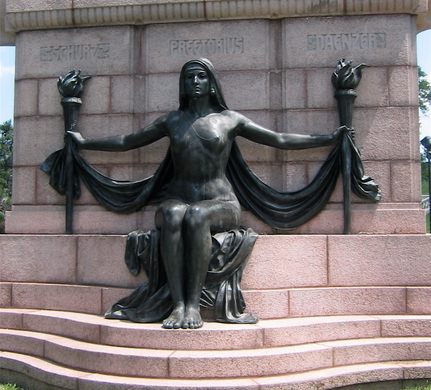

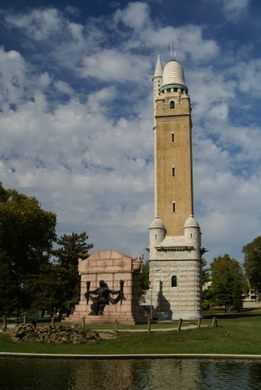


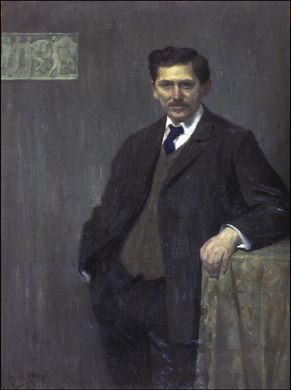







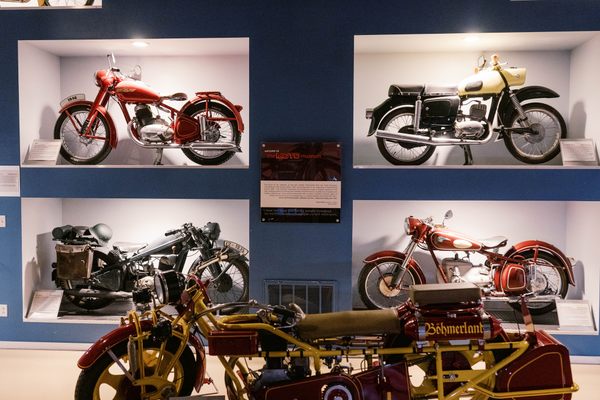
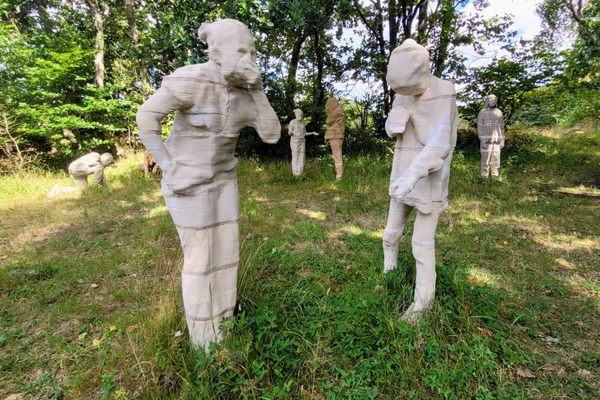




Follow us on Twitter to get the latest on the world's hidden wonders.
Like us on Facebook to get the latest on the world's hidden wonders.
Follow us on Twitter Like us on Facebook